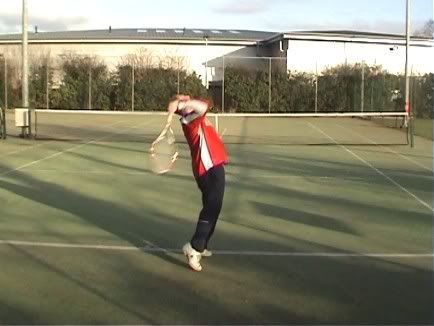FYI
I recently got a copy of
Badminton, 4th edition, (1996) by James Poole and Jon Poole.
Poole's work was referred to in an earlier reply by SystemicAnomaly.
Poole referred to work by David Waddel and Barbara Gowitzke using high speed cameras to analyze badminton smashes.
[
Badminton serves are not overhead. In badminton, the serve must be hit with the racket head below the waist. However, forehand "smashes" and "clears" are very commonly used and these correspond closely to the tennis serve.]
I found these interesting conference presentations that bear on pronation, internal shoulder rotation and tennis. Wadell & Gowitze used high speed film cameras to analyze strokes.
1) Myths and Realities in Badminton and Tennis (1985). D. Waddel & B. Gowitzke
https://ojs.ub.uni-konstanz.de/cpa/article/view/1441
The information is presented by stating a myth and then - in parenthesis - showing the findings of Wadell and Gowitzke
Here's the one that bears on pronation and internal shoulder rotation on the serve
"7. A major source of power is gained from the "wrist snap". (The popular concept of "wrist snap" is found in most badminton and tennis instruction manuals and refers to the method in which a player gains additional power in a forehand clear or smash or in (?, copy not legible) tennis "cannonball-type tennis serve. A recognition of what is truly happening anatomically (found in only a few references) is that the forearm is turning and, equally important, the upper arm is turning. The biomechanical terms for these actions in forehand strokes are pronation in the radio-ulnar joints and medial rotation in the shoulder joint. ................)"
[
medial rotation is a term used in some countries for
internal shoulder rotation]
In conference-
3rd International Symposium on Biomechanics in Sports (1985)
https://ojs.ub.uni-konstanz.de/cpa/issue/view/ISBS1985
Summary in 2000 of the badminton research of Wadell and Gowitzke
2)
BIOMECHANICAL PRINCIPLES APPLIED TO BADMINTON POWER STROKES
https://ojs.ub.uni-konstanz.de/cpa/article/view/2233
In conference-
18th International Symposium on Biomechanics and Sports (2000)
https://ojs.ub.uni-konstanz.de/cpa/issue/view/ISBS2000
In the late '80s, I can clearly remember reading of pronation, which I correctly interpreted as an elbow-forearm rotation, and attempting to improve my serve by practicing it. I wish that I had known............
Jim McLennan references Wadell & Gowitzke
http://www.essentialtennisinstruction.com/bts/coursework/badminton.html












